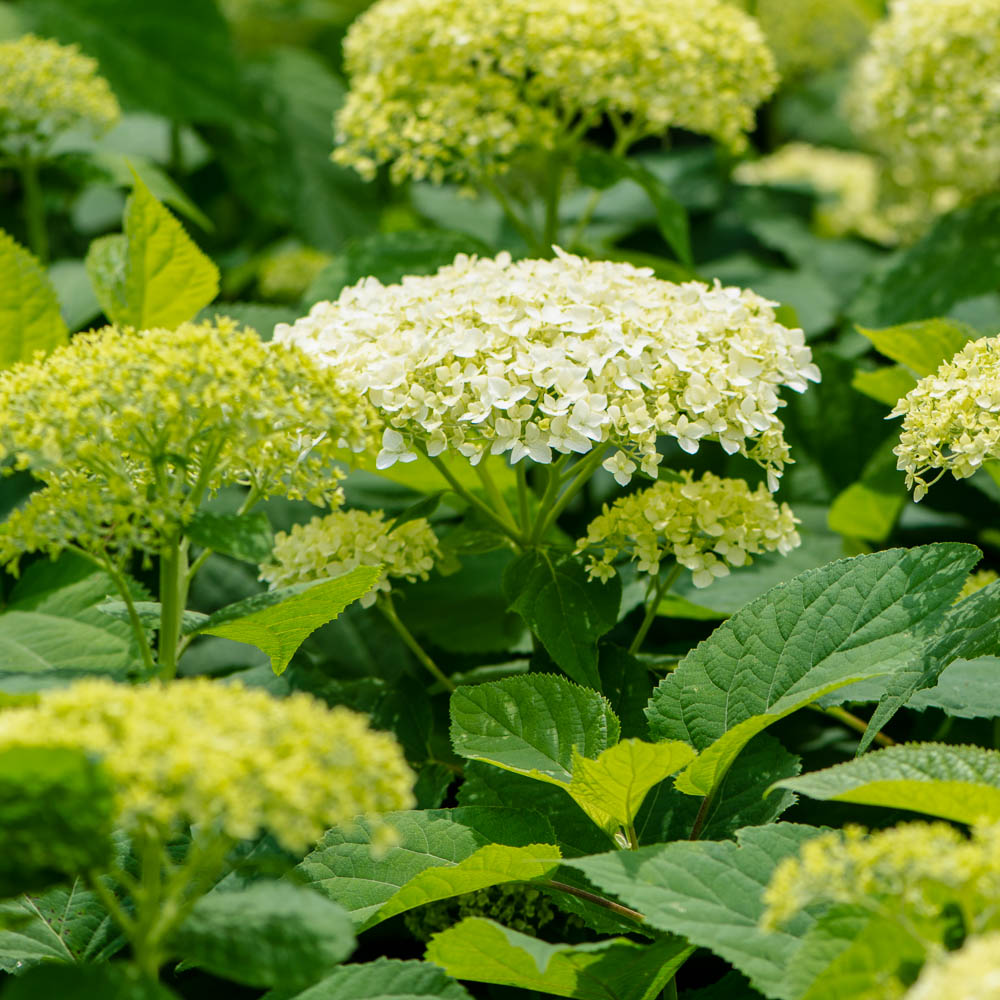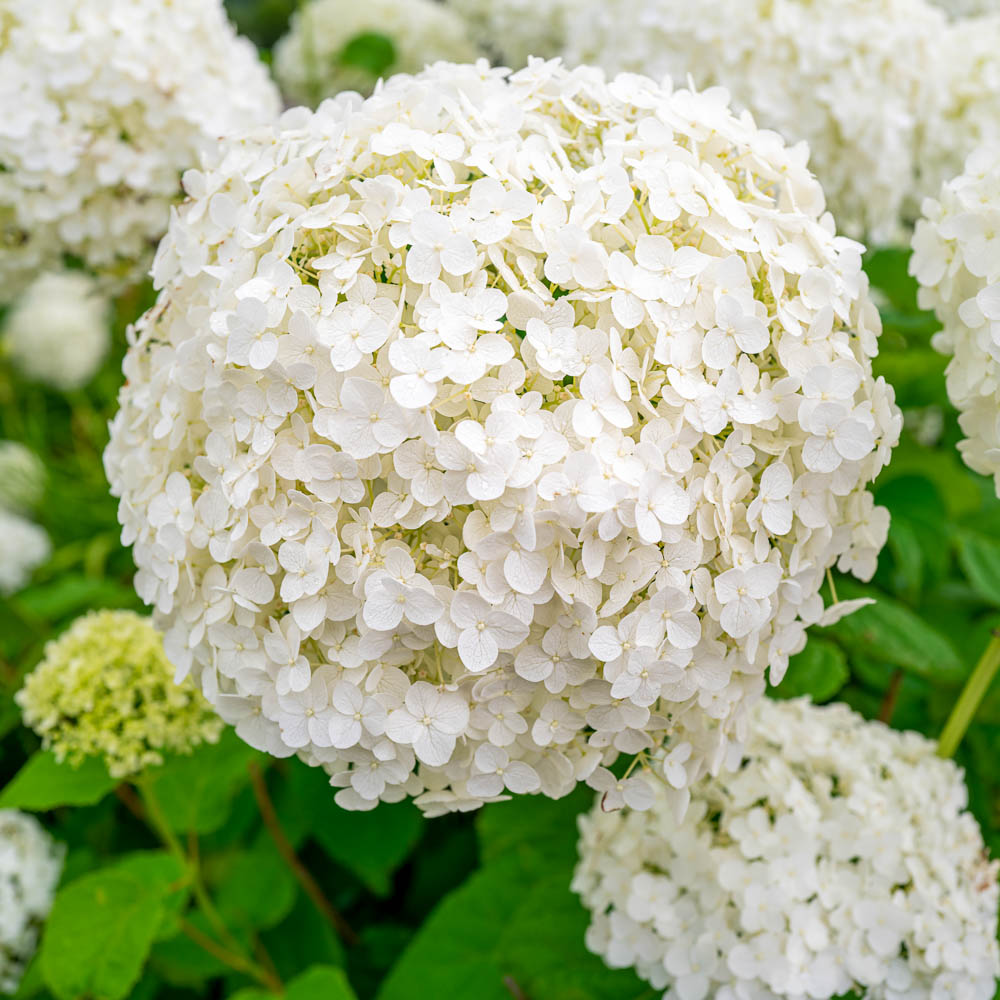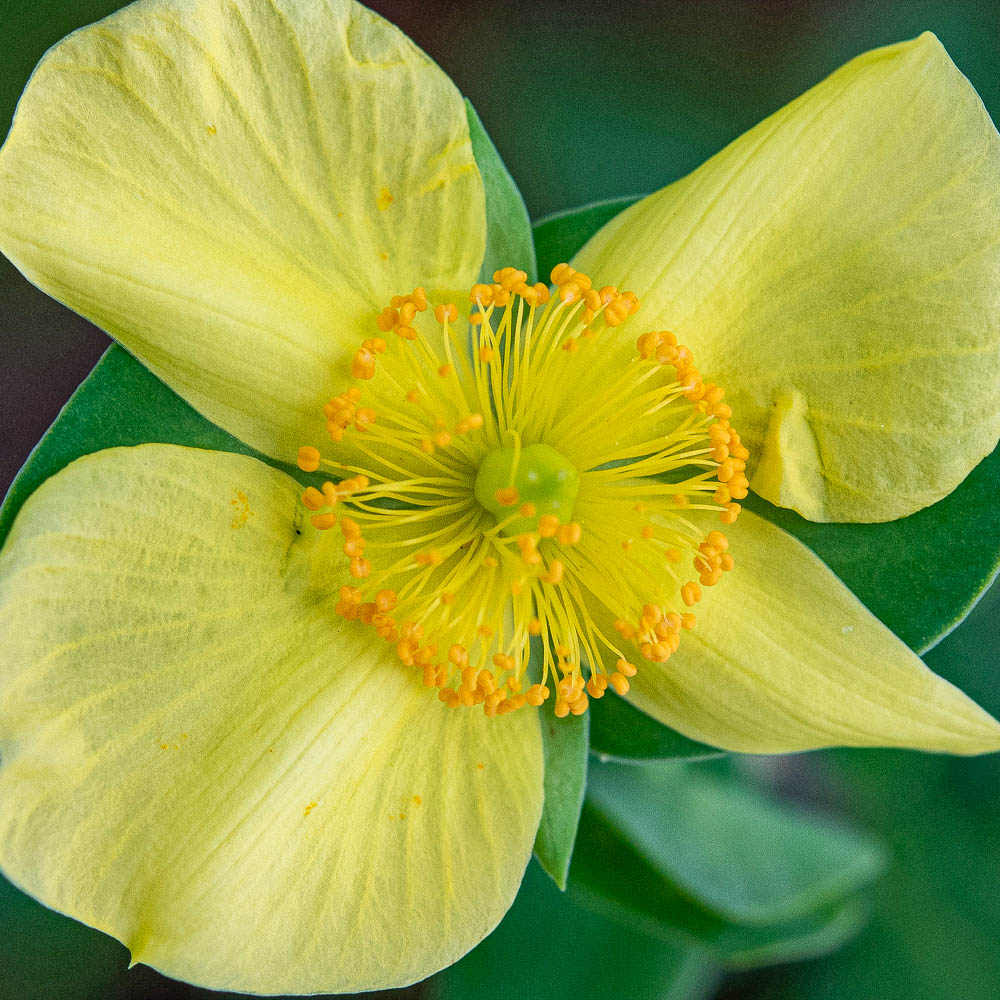5 Best Shrubs for Fall Color
Look no further for beautiful fall foliage! Add these shrubs to your garden for a beautiful fall landscape right in your backyard.
Mature trees add shade, color, and wildlife benefits to the landscape, but they’re not always the best neighbors to other plants.
Even grass and supposed “shade plants” such as azaleas, astilbes, and ferns have a hard time growing under trees that have had a lengthy head start. That’s because the territory under mature trees is usually dry shade – with root competition to boot.
Big tree roots can easily out-compete younger, smaller plants for moisture and nutrients, making it difficult for all but the most durable of plants to thrive.
Besides groundcovers such as hosta, liriope, barrenwort, hellebores, and coralbells, these five flowering shrubs are some of the best at holding their own in the dry shade and root competition under big trees:
Also known as “witch alder”, this compact native shrub offers the double bonus of white, licorice-scented, bottle-brush flowers in early spring and vibrant gold or red foliage in fall.
One of the best varieties is ‘Mt. Airy', a widely available six-footer that’s especially showy in fall. ‘Blue Mist’ and ‘Blue Shadow’ have bluish summer foliage.
Plants grow 5 to 6 feet tall and wide in Zones 4-9.

Passion4nature / iStock / via Getty Images
Another U.S. native, smooth hydrangeas are best known for their big, round, white flower heads that peak in July and August.
‘Annabelle’ is an old favorite. Incrediball® improves on it with sturdier stems. ‘Haas’ Halo’ is a newer award-winner with lacecap flowers, while Invincibelle Spirit® and ‘Bella Anna’ are pink-blooming varieties.
Wee White® is a compact white bloomer, while Invincibelle Mini Mauvette® is a compact pink bloomer.
Smooth hydrangeas grow from 3 to 6 feet tall and wide in Zones 3-9.
Native oakleaf hydrangeas (Hydrangea quercifolia) also do reasonably well in dry shade.

Melissa Kopka / iStock / via Getty Images
Most species of this large shrub family grow under mature trees, especially native Viburnum dentatum varieties such as Blue Muffin® and Chicago Lustre® and native Viburnum nudum varieties such as ‘Winterthur’ and Brandywine™.
Other good ones are ‘Summer Snowflake’, ‘Shasta’, ‘Mariesii’, ‘Shoshoni’, ‘Mohawk', the dwarf ‘Li’l Ditty', and the fragrant Korean spice viburnum.
Viburnums produce small umbrellas of mostly white flowers in April or May, and many versions of them have red or gold fall fruits and golden to red fall foliage.
Plants grow 4 to 8 feet tall and wide in Zones 3-8.

Sanghwan Kim / iStock / via Getty Images
The straight species of this glossy, broadleaf evergreen can grow upwards of 10 feet tall without pruning, but several dwarf varieties are good choices under trees.
‘Otto Luyken’ is a four-footer that’s widely available, while ‘Mt. Vernon’ is a foot or two shorter. Both produce the species’ familiar arching, fat, white flower spikes in April and May.
Cherry laurel does best in warmer climates and is winter-hardy down to about Zone 6.

Anutr Tosirkul / iStock / via Getty Images
This version of Hypericum is one of the lowest growers, topping out at 18 inches tall with a spread of about 2 feet.
Plants produce yellow flowers in July and August. ‘Brigadoon’ is a variety that adds bright-golden foliage to the interest.
‘Albury Purple’ is a related Hypericum with burgundy foliage and red fall fruits, while Blue Velvet™ has blue-tinted leaves. Both grow about 3 feet tall and 4 feet wide.
Hypericums are hardy in Zones 5-9.

Judy Darby / iStock / via Getty Images
Maximize your success by loosening the soil as best as you can without damaging the tree roots and working 2 or 3 inches of compost or quality topsoil into the native soil before planting.
Keep the soil consistently damp to encourage the new plant roots to establish. Even drought-tough plants aren’t very drought-tough until their roots have spread enough to supply the top growth’s water needs. New shrubs can take two to three years before they’re able to fend for themselves.
Three to four inches of mulch also helps retain soil moisture and keep weeds in check.